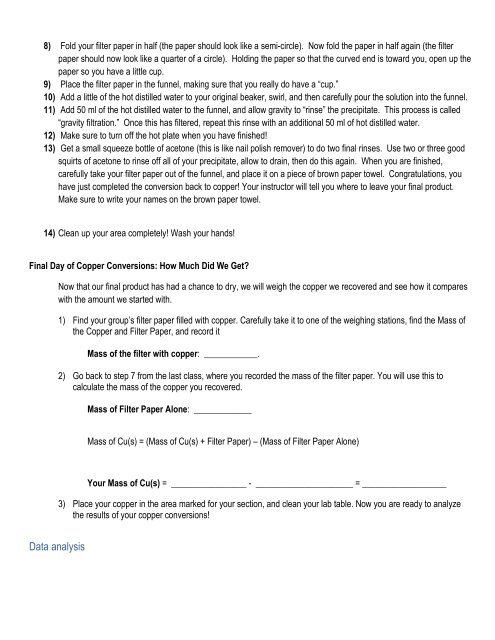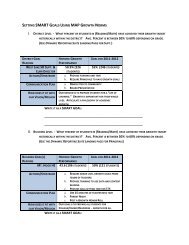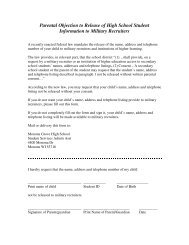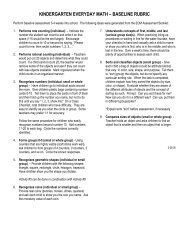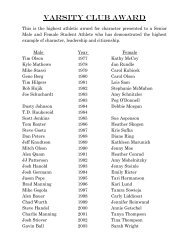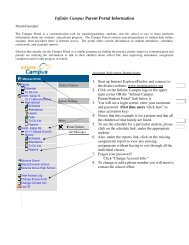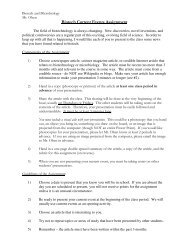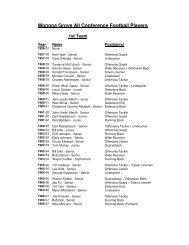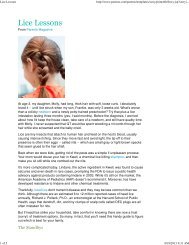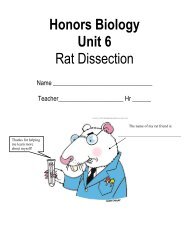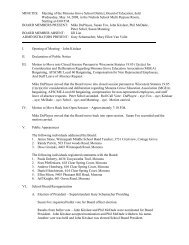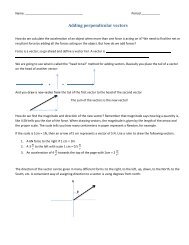Packet for Cu lab, naming and writing formulas, reaction types and ...
Packet for Cu lab, naming and writing formulas, reaction types and ...
Packet for Cu lab, naming and writing formulas, reaction types and ...
You also want an ePaper? Increase the reach of your titles
YUMPU automatically turns print PDFs into web optimized ePapers that Google loves.
8) Fold your filter paper in half (the paper should look like a semi-circle). Now fold the paper in half again (the filter<br />
paper should now look like a quarter of a circle). Holding the paper so that the curved end is toward you, open up the<br />
paper so you have a little cup.<br />
9) Place the filter paper in the funnel, making sure that you really do have a “cup.”<br />
10) Add a little of the hot distilled water to your original beaker, swirl, <strong>and</strong> then carefully pour the solution into the funnel.<br />
11) Add 50 ml of the hot distilled water to the funnel, <strong>and</strong> allow gravity to “rinse” the precipitate. This process is called<br />
“gravity filtration.” Once this has filtered, repeat this rinse with an additional 50 ml of hot distilled water.<br />
12) Make sure to turn off the hot plate when you have finished!<br />
13) Get a small squeeze bottle of acetone (this is like nail polish remover) to do two final rinses. Use two or three good<br />
squirts of acetone to rinse off all of your precipitate, allow to drain, then do this again. When you are finished,<br />
carefully take your filter paper out of the funnel, <strong>and</strong> place it on a piece of brown paper towel. Congratulations, you<br />
have just completed the conversion back to copper! Your instructor will tell you where to leave your final product.<br />
Make sure to write your names on the brown paper towel.<br />
14) Clean up your area completely! Wash your h<strong>and</strong>s!<br />
Final Day of Copper Conversions: How Much Did We Get?<br />
Now that our final product has had a chance to dry, we will weigh the copper we recovered <strong>and</strong> see how it compares<br />
with the amount we started with.<br />
1) Find your group’s filter paper filled with copper. Carefully take it to one of the weighing stations, find the Mass of<br />
the Copper <strong>and</strong> Filter Paper, <strong>and</strong> record it<br />
Mass of the filter with copper: ____________.<br />
2) Go back to step 7 from the last class, where you recorded the mass of the filter paper. You will use this to<br />
calculate the mass of the copper you recovered.<br />
Mass of Filter Paper Alone: _____________<br />
Mass of <strong>Cu</strong>(s) = (Mass of <strong>Cu</strong>(s) + Filter Paper) – (Mass of Filter Paper Alone)<br />
Your Mass of <strong>Cu</strong>(s) = _________________ - ______________________ = ___________________<br />
3) Place your copper in the area marked <strong>for</strong> your section, <strong>and</strong> clean your <strong>lab</strong> table. Now you are ready to analyze<br />
the results of your copper conversions!<br />
Data analysis


